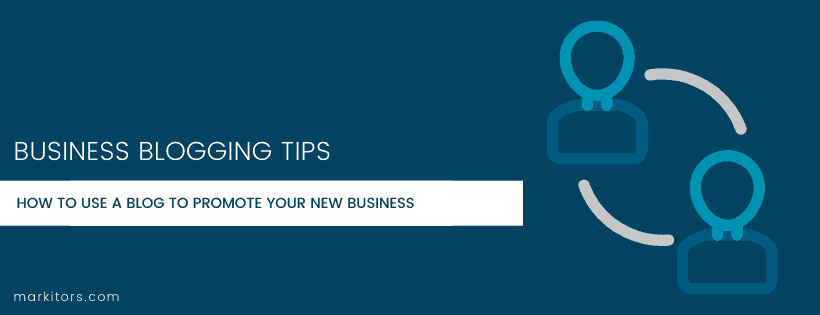
A lot of new business owners roll their eyes at the idea of using a blog. They imagine mom and pop bloggers discussing their latest travel adventures and can’t see how that could help their business.
What those owners might not realize is a majority of internet users (77%) regularly read blogs. And, many of the largest companies on the planet, from Amazon to Coca-Cola, blog almost every day.
Why? Blogs can help establish your business as an industry leader, build your online presence, and attract more leads.
So, for all you beginner bloggers out there looking to learn how to use a blog to promote your business, keep reading.
Why is blogging important for new businesses?
A blog is one of the most important digital marketing tools in your arsenal, especially as a new business owner.
When done right, blogs attract new customers with informative content and educate your target audience on your business’ values and story. Additionally, studies have shown that companies that blog receive 55% more website visitors than those that don’t.
For new businesses, blogs are about more than just lead generation, however. Blogs help create a professional online presence and position your business as an industry leader. They’re also an excellent opportunity to connect with your clients or customers to cultivate an online community.
Essentially, a new business’s blog says “this is who we are and what we do”.
A majority of blog traffic is also ‘organic’. That means instead of coming to your site via paid advertisements, visitors will reach your site through organic listings on search engines.
In fact, according to a study from Bright Edge, on average, only around 15% of business blog traffic comes from paid ads. The majority of people who read blog posts find them by typing something into a search engine and clicking on an organic result below.
The only problem for new businesses is getting to those top spots of search engine results pages (SERPs) isn’t easy. That’s where search engine optimization (SEO) comes in.
Why is SEO important for your blog?
One of the most important parts of learning how to blog for a new business is perfecting SEO.
SEO is the process of increasing a website’s visibility in search engines for important keywords and topics.
It’s incredibly valuable for new businesses for two main reasons. First, new businesses often can’t afford to outspend competition on paid advertising. And second, organic search traffic drops significantly after the first page of Google results.
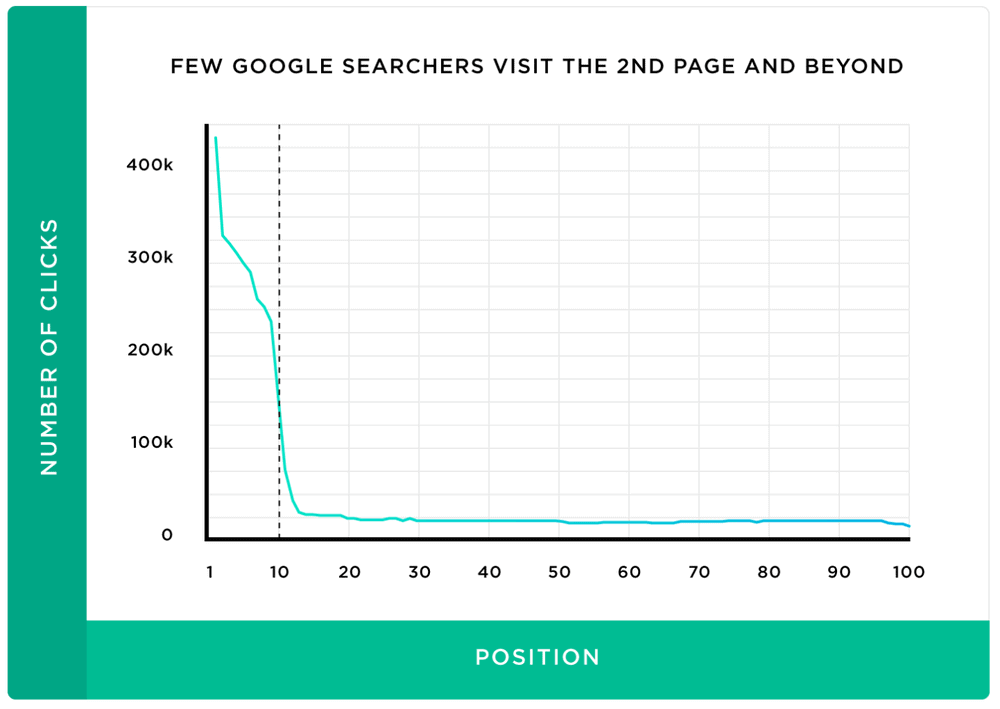
This is especially relevant for new business because it takes time to rank on the first page of search engine results for important keywords. An Ahrefs study found that, on average, only 22% of pages that rank in the Top 10 of search results are under a year old.
On top of that, if you have a blog that isn’t optimized for search engines, even if someone does see your listing beyond page one, they’re unlikely to click on it. That’s because the clickthrough rate (CTR) of search results falls dramatically after the first page as well. Only an estimated 0.78% of users will click on a result on Google’s second page.
Clickthrough Rate is the number of clicks a search engine listing gets divided by the number of times it is viewed, called impressions.
For example, if you had ten clicks and 100 impressions, then your CTR would be 10%. The higher the clickthrough rate, the better.
The reality is that without SEO, it’s difficult to get the true potential out of your new business’s blog. For example, without proper keyword research (more on this later), even selecting topics for your blogs is just a shot in the dark.
That’s why you need to make sure you properly set up your blog so both search engines and your clientele can get the most out of it.
Setting up a blog for your new business
Setting up a blog can be a time-consuming process, but once it’s done, your efforts can pay off for years to come. Here are just a few blogging tips for businesses to help you get started.
Starting a website.
If you don’t already have a website where you can post your blogs, you’ll need to choose a content management system (CMS) and a website domain hosting service to create one. Popular options for CMS systems would be options like WordPress or Wix. For a website domain hosting service, you could try GoDaddy or Amazon Web Hosting Services.
From there, you’ll have some work to do setting up your site, but it’s always best to start your blog as soon as possible. Learning how to blog for business takes time.
Create a content strategy. Know your audience.
After you’ve finished your site, or if you already had one set up, start your blogging journey by getting familiar with your target audience. To do this, try using competitor analysis and industry research to create buyer personas.
Buyer personas are fictional representations of your perfect customers or clients. Every article you produce can target a specific buyer persona. From here, you’ll want to begin to devise your content strategy that has practical, accomplishable goals.
To do that you can answer questions like:
-
- Who are you targeting with your posts? Which buyer persona?
- What type of content are you using? Blogs? Videos? Podcasts?
- How often will you post? Daily? Weekly? Monthly?
- Where will you promote your content? Social media? Partner sites?
- What keywords do you need to target?
- What is the search intent of your audience?
By answering these questions and more, you can begin to formulate a strategy that targets an audience that is more likely to convert into paying customers or clients.
Create an editorial calendar.
Creating an editorial calendar is the easiest way to organize and track your blog posts. Consistency is key if you want to create a community and draw in organic web traffic. Plus, with an editorial calendar, it’s easier to ensure you have enough content ideas and to analyze your blog posts’ success.
Use keyword research to guide topic selection.
Keyword research finds and analyzes common search queries that real people enter into search engines. It helps to inform a content strategy by determining popular searches related to a business topic. Plus, with keyword research, you can determine user intent for popular searches.
Is your blog visitor looking to buy a product or service? Are they looking for information? Keyword research can help you figure this out.
Additionally, it’s the perfect resource for brainstorming blog topics using real-world data.
Format for user experience with search engines in mind.
Let’s be honest, no one likes to read a wall of text online. Remember to format for readability and engagement in your post by using bolded sections, breaking up text, and adding lists and pictures.
After you cater to your human audience, don’t forget the search engines. Formatting pictures as .jpeg or .png, optimizing title tags, creating meta descriptions, there’s a lot that goes into SEO formatting. Still, if you want to see organic traffic on your blogs, it needs to be done.
If you’re ever in need of a little technical assistance, feel free to visit our technical SEO page for more information. And don’t forget your call-to-actions to promote your site at the end of your blogs.
Sometimes the hardest part of learning how to blog for business is simply finding quality blog topics. Thankfully, Google offers several free tools to help you out.
Does your business have a niche focus? Find blog topic inspiration for your specific industry.
Below are three examples of how to use free Google tools to find blog topics.
Example #1: Using Google Trends to find landscaping blog topics
Imagine you’ve been a gardener your whole life, and you’re finally looking to launch your own landscaping business. You have two specialty services: landscape lighting and tree trimming. You want to market both, but you don’t have the money.
So, you’re trying to decide which specialty service you want to market with your blog first. You decide to use Google Trends to help out.
Google Trends can be used to compare the two terms’ search volume over the past year.
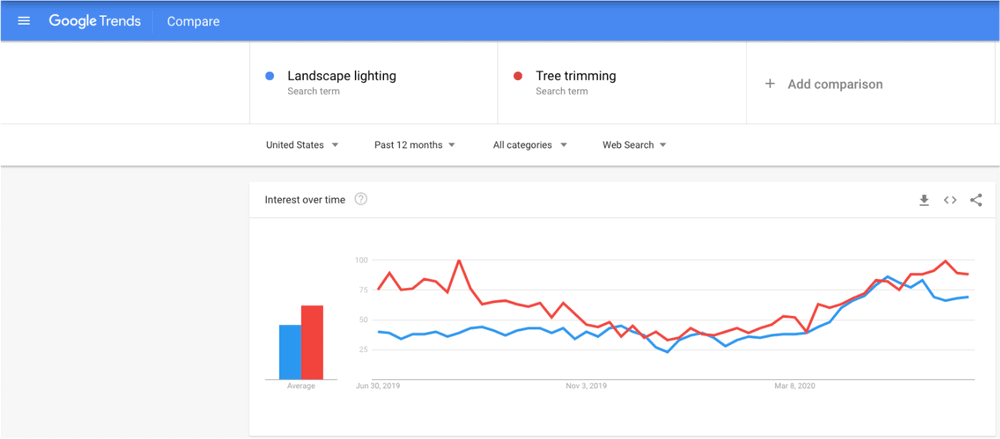
Then you could use the geographic search feature to see if your state is more likely to use one term over the other.

And finally, if the data leads you to select ‘tree trimming’ as your first blog topic of choice. You could find specific blog ideas from the trend related topics and queries feature just below the geographic search.
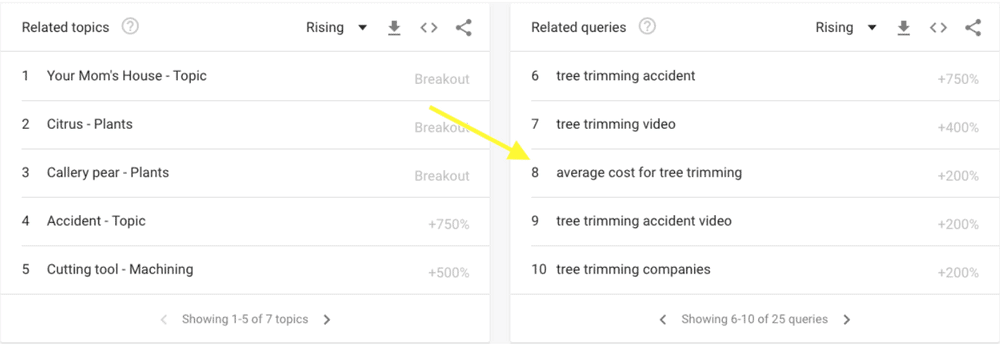
For example, you could produce an article on ‘the average cost for tree trimming’, a query that has seen a 200% increase in search traffic over the past month.
No matter what type of new business you have, Google Trends has a lot to offer.
Example #2: Using Autocomplete to find pool cleaning blog topics
In this scenario, you just started a new pool cleaning company and need help with blog topics.
You decide to use Google Autocomplete to find common searches related to pool cleaning. You then type in ‘best pool cleaning…’ and allow Google to finish your sentence.
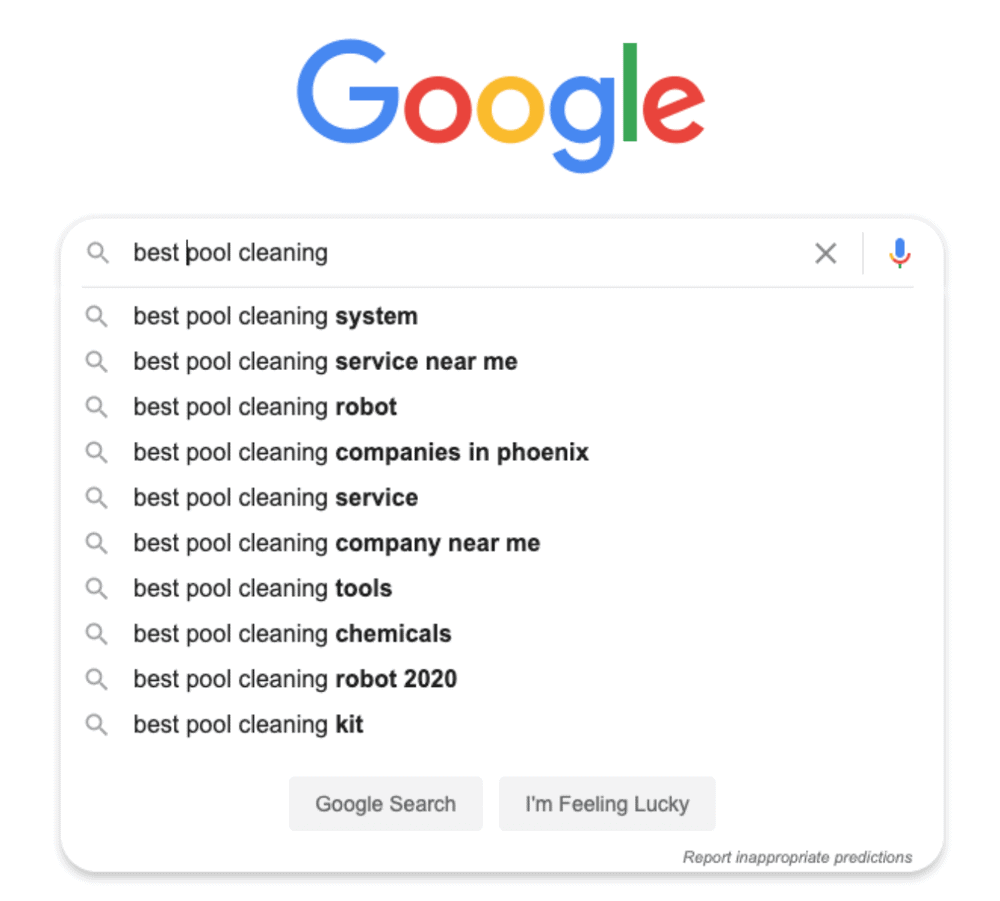
Right away, the results inspire you. You know what the best pool cleaning chemicals and robots are. Maybe you can make an article about that since it’s a common topic.
Or, if that doesn’t look like something you want to write about, you could also use autocomplete to find common industry myths to address in blogs. For example, customers might want to know that there are better ways to clean their pools than with vodka (yes, that’s a common query in Google).
Example #3: Using People Also Ask to find tax preparation blog topics
Finally, Google provides a People Also Ask (PAA) section on many of its results pages. The PAA section includes common queries related to the one you type in.
In this scenario, you’re a tax preparation company looking to boost blog traffic.
One of the best ways to do that is to create a blog answering commonly asked questions. Where better to find those questions than in the PAA section of Google? So, you type in ‘How do I prepare my tax return’ into the search bar.
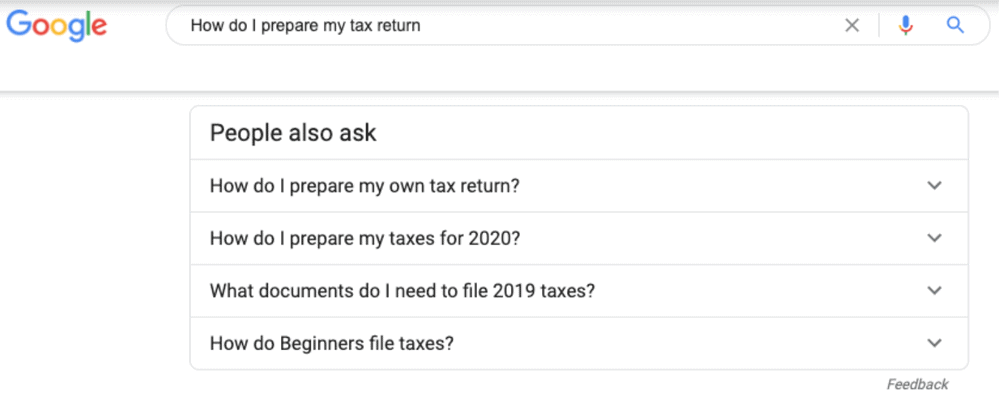
In this example, you could create a blog about ‘beginner tax filings’ or ‘what documents you need to file taxes’ based on the PAA results. Sharing your expertise in blogs is the perfect way to build your online presence with professional content.
Next steps to promote your new business
Blogging is definitely helpful for new businesses, but it isn’t always easy. In fact, in 2020, the ideal blog length is 2,100-2,400 words.
So if you want more advice on how to use a blog to promote your business feel free to contact us. We’d love to help you get started with your new business’ SEO marketing strategy as soon as possible.
Markitors is a digital marketing agency dedicated to helping small businesses with SEO. Feel free to contact us or check out our services pages for more information: SEO content, digital PR, local SEO, and technical SEO.









